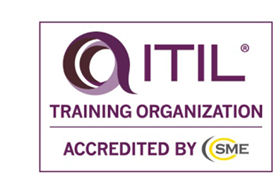
Course overview
The Information Technology Infrastructure Library (ITIL) is a
customizable framework for good practice of IT services and
infrastructure.
ITIL® Foundation Certification is an entry-level qualification that
introduces the fundamentals of IT Service Management (ITSM) based on the
IT Infrastructure Library (ITIL). It describes the key concepts,
processes, functions and roles of the ITIL service lifecycle
Prerequisites
Experience and knowledge of IT computing environments are useful but not essential
Audience
IT Managers, Service and product managers, process Practitioner, IT technical staff and all who are responsible for the delivery of IT services in an organization
Course objectives
The purpose of the ITIL Foundation certificate in IT Service Management is to certify that you have gained knowledge of the ITIL terminology, structure and basic concepts and have comprehended the core principles of ITIL practices for Service Management.
After completing the ITIL foundation course and exam, you will have gained knowledge and understanding in the following areas:
|
|
Exam Format
The ITIL Foundation Certification is a close book examination which can be taken online or in paper-based format. Candidates need to answer 40 multiple choice questions within 1 hour. The passing mark is 65% (i.e. minimum 26 correct answers out of 40 questions).

